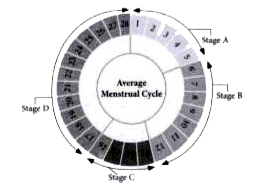Which of the following changes occur in ECG during myocardial infarction?
Flattened T wave
Depressed ST segment
Elevated ST segment
Increased length of PQ interval
To determine the changes that occur in the ECG during a myocardial infarction, we can follow these steps:
Step 1: Understand the Normal ECG Waves
- The normal ECG consists of several key components: the P wave, QRS complex, and T wave. Each of these waves represents different electrical activities in the heart.
Step 2: Identify the Key Changes During Myocardial Infarction
- Myocardial infarction (heart attack) is characterized by a blockage in the coronary arteries, leading to reduced blood flow to the heart muscle. This condition affects the electrical activity of the heart, which can be observed in the ECG.
Step 3: Recognize the Specific ECG Changes
- The most notable change in the ECG during a myocardial infarction is the elevation of the ST segment. This elevation indicates that there is a significant blockage and that the heart muscle is not receiving enough blood.
Step 4: Differentiate Between Other Changes
- Other changes that can occur in the ECG include:
- Flattened T waves, which may indicate less severe blockages.
- Depressed ST segments, which can occur when there is a sudden collapse of veins or arteries.
- Prolonged PQ intervals, which suggest issues with the heart's electrical conduction system.
Step 5: Conclude the Correct Answer
- Based on the above observations, the correct change that occurs in the ECG during myocardial infarction is the elevated ST segment.
Final Answer:
The change that occurs in the ECG during myocardial infarction is the elevated ST segment.
---
- The normal ECG consists of several key components: the P wave, QRS complex, and T wave. Each of these waves represents different electrical activities in the heart.
- Myocardial infarction (heart attack) is characterized by a blockage in the coronary arteries, leading to reduced blood flow to the heart muscle. This condition affects the electrical activity of the heart, which can be observed in the ECG.
- The most notable change in the ECG during a myocardial infarction is the elevation of the ST segment. This elevation indicates that there is a significant blockage and that the heart muscle is not receiving enough blood.
- Other changes that can occur in the ECG include:
- Flattened T waves, which may indicate less severe blockages.
- Depressed ST segments, which can occur when there is a sudden collapse of veins or arteries.
- Prolonged PQ intervals, which suggest issues with the heart's electrical conduction system.
- Based on the above observations, the correct change that occurs in the ECG during myocardial infarction is the elevated ST segment.
The change that occurs in the ECG during myocardial infarction is the elevated ST segment.
Topper's Solved these Questions
Similar Questions
Knowledge Check
Which of the following change occur during parturition?
Arelaxin relax the pubic symphysisBProgesterone secretion stopsCOxytocin induces contraction in uterusDAll of theseWhich of the following changes occurs during adolescence in boys ?
ACracking of voiceBIncrease in weightCBreakage of milk teethDIncrase in height
Which of the following events occur during stage D?ABlood vessels of uterus lining break downBWall of uterus becomes thicker by cell divisionCFertilised ovum gets implanted.DRelease of mature ovum
Which of the following changes occur in axon membranes during repolarisation?
View SolutionWhich of the following changes occurs in the presence flight?
View SolutionWhich of the following is false about ECG
View SolutionWhich of the following reactions occur during calcination ?
View SolutionWhich of the following reaction occur during calcination ?
View Solution
